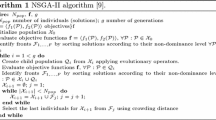Abstract
Various Prototype Reduction Schemes (PRS) have been reported in the literature. Based on their operating characteristics, these schemes fall into two fairly distinct categories — those which are of a creative sort, and those which are essentially selective. The norms for evaluating these methods are typically, the reduction rate and the classification accuracy. It is generally believed that the former class of methods is superior to the latter. In this paper, we report the results of executing various creative PRSs, and attempt to comparatively quantify their capabilities. The paper presents a brief taxonomy of the various reported PRS schemes. Our experimental results for three artificial data sets, and for samples involvingreal-life data sets, demonstrate that no single method is uniformly superior to the others for all kinds of applications. This result, though consistent with the findings of Bezdek and Kuncheva [1], is, in one sense, counter-intuitive, because the various researchers have presented their specific PRS with the hope that it would be superior to the previously reported methods. However, the fact is that while one method is superior in certain domains, it is inferior to another method when dealing with a data set with markedly different characteristics. The conclusion of this study is that the question of determining when one method is superior to another remains open. Indeed, it appears as if the designers of the pattern recognition system will have to choose the appropriate PRS based to the specific characteristics of the data that they are studying. The paper also suggests answers to various hypotheses that relate to the accuracies and reduction rates of families of PRS.
Similar content being viewed by others
Author information
Authors and Affiliations
Corresponding authors
Rights and permissions
About this article
Cite this article
Kim, SW., Oommen, B. A brief taxonomy and ranking of creative prototype reduction schemes. Patt. Analy. App. 6, 232–244 (2003). https://doi.org/10.1007/s10044-003-0191-0
Issue Date:
DOI: https://doi.org/10.1007/s10044-003-0191-0





